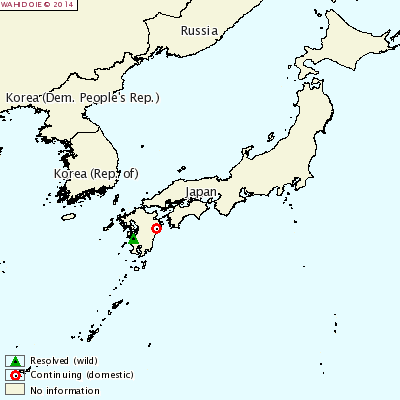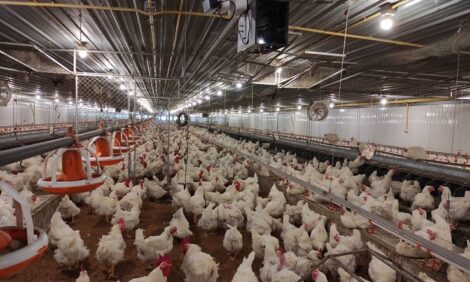



Bird Flu Confirmed in Wild Birds in Japan
JAPAN - Highly pathogenic avian influenza, H5N8, has been detected and confirmed in the Kagoshima region of the country.Outbreaks in wild birds
Case 1: A weakened Grus vipio (white-naped crane) was collected on 23 November 2014 and tested at Kagoshima University.
It was confirmed on 29 November 2014 that the bird was infected with H5N8 influenza A virus.
The result of gene sequencing indicated that a HA0 cleavage site of the amino acid sequence was consistent with that of highly pathogenic avian influenza virus.
Case 2: Water collected from roost* of cranes on 1 December 2014 was tested against avian influenza virus. It was confirmed on 6 December 2014 that H5N8 influenza A virus was detected in a sample.
The result of gene sequencing indicated that a HA0 cleavage site of the amino acid sequence was consistent with that of highly pathogenic avian influenza virus.
Artificial wet paddy in a nationally-designated bird sanctuary in Izumi-shi Case 3: A dead Grus monacha (hooded crane) was collected on 7 December 2014 and tested against avian influenza virus.
It was confirmed on 10 December 2014 that the bird was infected with H5N8 influenza A virus. The result of gene sequencing indicated that a HA0 cleavage site of the amino acid sequence was consistent with that of highly pathogenic avian influenza virus.
Outbreak in domestic birds
On 15 December 2014, the local veterinary service in Miyazaki Prefecture received a notification from a broiler breeder farm on an increase in the number of dead birds (one bird on 13 December, 12 birds on 14 December and 19 birds on 15 December).
The samples were sent to the laboratory of local veterinary service (Miyazaki Livestock Hygiene Centre) and the samples from dead birds were confirmed to be influenza A virus positive by antigen-capture kits. On the same day, the centre started RT-PCR test and confirmed that the subtype was H5 on 16 December 2014 (midnight of 15 December 2014).
Stamping-out policy was applied to the affected farm. Destruction of all the susceptible birds in the affected farm (approx. 4,000 birds) was completed in the morning of 16 December 2014. Movement restrictions are imposed on the farms within the radius of 3km of the affected farm.
Shipment restrictions are imposed on the farms within the radius of three to 10 kilometres of the affected farm. The N-type has not yet been identified.









